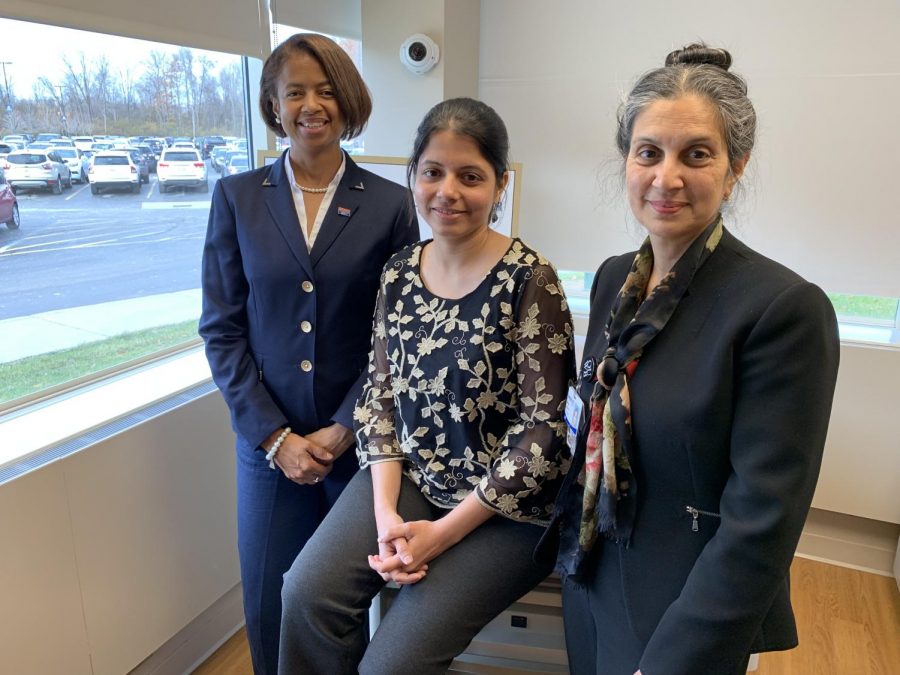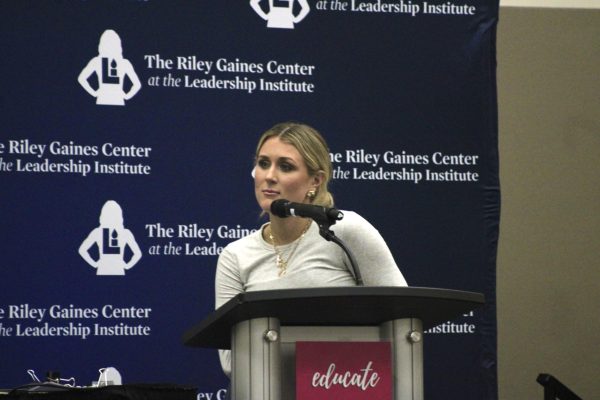OUWB and UDM School of Dentistry team up for new interprofessional program
From left to right, Melanie Mayberry, D.D.S., Arati Kelekar, M.D. and Nelia Afonso, M.D., work together at the Clinical Skills Center on the interprofessional curriculum for OUWB and Detroit Mercy.
In the medical world, dentists and doctors seem as if they are on two opposite sides of the spectrum. But the way the medical field is changing, that may not necessarily be the case.
Pretty soon, medical students at Oakland University William Beaumont School of Medicine (OUWB) and dental students at University of Detroit Mercy School of Dentistry (UDM) will be working side by side as the two universities launch a new interprofessional course to educate medical and dental students on how health care professionals collaborate for the benefit of their patients.
Pioneered by former OUWB Dean Robert Folberg, M.D., and UDM School of Dentistry Dean Mert Aksu, D.D.S, J.S., MHSA, 144 second year medical and dental students will be in the same classroom for an all-day course in which both will share case studies.
Beginning on March 13, dental students will learn communication skills and patient encounters side-by-side with medical students at OUWB’s Clinical Skills Center, Beaumont Hospital in Troy.
“The collaboration is educationally beneficial since it creates opportunities for the students to learn together and understand how collaborative management of the patient can improve health outcomes,” Aksu said. “Teaching students collaborative management skills will reduce the impact of the inter-relationship between oral and systemic diseases and will also reduce costs in the long run and improve patient satisfaction.”
At the Center, they will interact with trained standardized patients to diagnose a range of conditions. The case topics will vary and include such diagnosis as oral cancer and other issues.
Medical and dental students will then work together as a health care team to deliver the news to the standardized patients and the process will include pre-and post-assessments by instructors, and feedback from patients as well.
“Healthcare today is not just delivered by one person, it’s always a team taking care of a patient because they get better outcomes,” said Nelia Alfons, M.D. of OU. “The earlier they work together and learn how to work in teams and collaborate, later on when they’re actually taking care of patients it gives them a much better understanding about the other professional scope of practice, and how they can help improve the outcome of a patient.”
At the end of each session, the students will have learned how to deliver difficult news in an effective manner to the patient; describe the types of responses patients and families may have to difficult medical news; and apply knowledge of their own professional role and those of other team members to appropriately assess and address the needs of the patient.
Additionally, students should be able to communicate effectively with the patient and other members of the health care team and work collaboratively with students from other health professions to maintain a climate of mutual respect and shared values.
“Right now it’s more classroom based and simulation than in the real world,” Alfonso said. “We hope we will be able to give them (the students) experience so that when they graduate they will come out with a clearer understanding and ability to collaborate and work together.”
OUWB and UDM recognize the potential for this program to continue further into medical school. According to Alfonso, they hope to continue the collaboration into the third and fourth years of medical school.
“We’re hoping that we’ll not just do this and then stop,” she said. “But we’ll continue this and… as students get more advanced in their fields as students, they will continue taking this to the next level with clinical discussions, and providing actual patient care like in more of a clinic setting or a hospital setting.”












